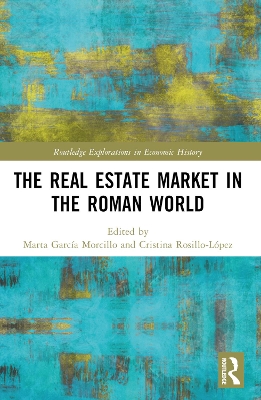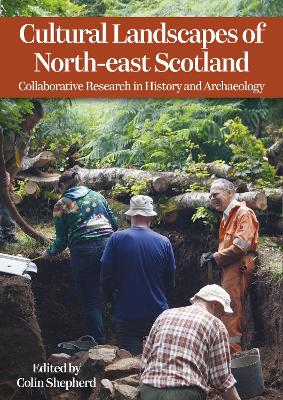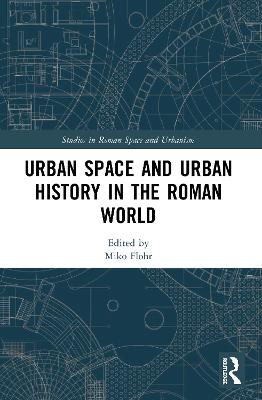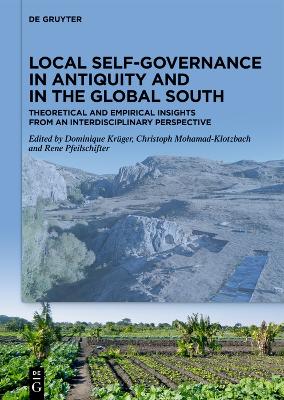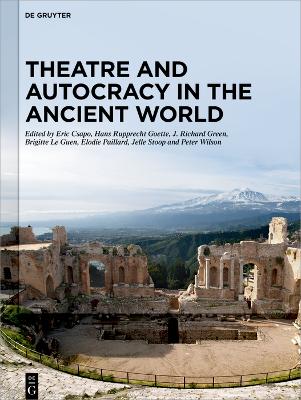Space, Movement and the Economy in Roman Cities in Italy and Beyond
 portes grátis
portes grátis
Space, Movement and the Economy in Roman Cities in Italy and Beyond
Zuiderhoek, Arjan; Vermeulen, Frank
Taylor & Francis Ltd
05/2021
432
Dura
Inglês
9780367371562
15 a 20 dias
1000
Descrição não disponível.
PART I: Introducing the themes 1. Introduction: space, movement and the economy in Roman cities 2. Economic space and movement between Roman towns, their suburbia and territories: the regional perspective PART II: Spaces 3. Beyond Pompeii and Ostia: commerce and urban space in Roman Italy 4. Market buildings in Asia Minor: old assumptions and new starting points 5. Do economic activities impinge on Roman urban matrices in Asia Minor? A new style/ function debate 6. Elites and economic space in Roman Imperial Asia Minor 7. Making space for commerce in Roman Britain: reevaluating the nature and impact of the forum/ basilica complex 8. The Roman colony of Sena Gallica: urban space and economic activities 9. Aquileia's market spaces PART III: Movement 10. Finding your way towards the Macellum : the spatial organization of a Roman type of market building 11. How open was the Roman city? Movement and impediments to movement in the street system 12. Transport and trade: an energy expenditure approach for the distribution of marble in Central Adriatic Italy in Roman times 13. "This mule will ruin me": the economy of mobility in Roman towns 14. Munigua's place in the operational chain: some considerations regarding the movement of people and goods and the division of labour in the lower Guadalquivir Valley during the Roman period 15. Understanding Rome as a port city 16. Space, accessibility and movement through the Portus Romae PART IV: Conclusion The economics of space and mobility in Roman urbanism
Este título pertence ao(s) assunto(s) indicados(s). Para ver outros títulos clique no assunto desejado.
CIL VI;Roman cities;Vice Versa;Roman economy;Alba Fucens;Roman urban space;Dense;Urban economic space;Market Building;Pre-modern urbanism;Roman Urban;Commercial Buildings;Sena Gallica;Roman City;De Ligt;Extensive Land Reclamation;Wheeled Traffic;Roman Urban Landscapes;Mama;Delicate Management;Greco Roman City;Van Limbergen;Social Urban Landscape;Late Fourth Century Bce;Commercial Enterprises;Ponte Milvio;Space Syntax Analyses;Secondary Agglomerations;Isola Sacra
PART I: Introducing the themes 1. Introduction: space, movement and the economy in Roman cities 2. Economic space and movement between Roman towns, their suburbia and territories: the regional perspective PART II: Spaces 3. Beyond Pompeii and Ostia: commerce and urban space in Roman Italy 4. Market buildings in Asia Minor: old assumptions and new starting points 5. Do economic activities impinge on Roman urban matrices in Asia Minor? A new style/ function debate 6. Elites and economic space in Roman Imperial Asia Minor 7. Making space for commerce in Roman Britain: reevaluating the nature and impact of the forum/ basilica complex 8. The Roman colony of Sena Gallica: urban space and economic activities 9. Aquileia's market spaces PART III: Movement 10. Finding your way towards the Macellum : the spatial organization of a Roman type of market building 11. How open was the Roman city? Movement and impediments to movement in the street system 12. Transport and trade: an energy expenditure approach for the distribution of marble in Central Adriatic Italy in Roman times 13. "This mule will ruin me": the economy of mobility in Roman towns 14. Munigua's place in the operational chain: some considerations regarding the movement of people and goods and the division of labour in the lower Guadalquivir Valley during the Roman period 15. Understanding Rome as a port city 16. Space, accessibility and movement through the Portus Romae PART IV: Conclusion The economics of space and mobility in Roman urbanism
Este título pertence ao(s) assunto(s) indicados(s). Para ver outros títulos clique no assunto desejado.
CIL VI;Roman cities;Vice Versa;Roman economy;Alba Fucens;Roman urban space;Dense;Urban economic space;Market Building;Pre-modern urbanism;Roman Urban;Commercial Buildings;Sena Gallica;Roman City;De Ligt;Extensive Land Reclamation;Wheeled Traffic;Roman Urban Landscapes;Mama;Delicate Management;Greco Roman City;Van Limbergen;Social Urban Landscape;Late Fourth Century Bce;Commercial Enterprises;Ponte Milvio;Space Syntax Analyses;Secondary Agglomerations;Isola Sacra


